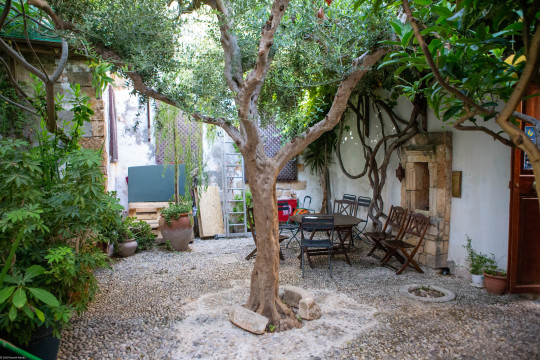#Western influences
Explore tagged Tumblr posts
Text
Exploring the Unique Blend of Tradition and Modernity: Modern Japanese Paintings and Influential Artists
In the world of painting, modern Japanese paintings have gained popularity due to their unique blend of traditional Japanese art styles and Western influences. During the Edo period, traditional Japanese art forms such as Ukiyo-e and ink painting were popular. However, with the Meiji Restoration, Japan underwent major changes, including the adoption of Western culture. This led to the emergence…

View On WordPress
#contemporary Japanese artists#Kyoto art museums#Meiji Restoration#Modern Japanese paintings#traditional Japanese art#Western influences
3 notes
·
View notes
Quote
Countering the dominant symbol of hijab as oppression are contemporary practices that celebrate Muslim identity and as women. In the mid-1970s, some Muslim women in Egypt began a movement called the ‘Sahwah’ (awakening) that sparked a period of heightened religiosity that began to be reflected in the hijab as a dress code, to both publicly announce their religious beliefs as well as a way to simultaneously reject Western influences of dress and culture. Many Muslim women also viewed the hijab garment as a positive resource, as a way to avoid harassment and unwanted sexual advances in public and to instead allow them to enjoy equal rights of complete legal, economic, and political status. Thus, the hijab is a fluid symbol that functions simultaneously as a symbol of oppression and of pride and respect, the right to freedom of expression and the right to practise one’s religion, albeit devoid of the usual stereotypes surrounding the practice of Islamic faith.
People's Union of Civil Liberties, 'Closing the Gates of Education: Violation of rights of Muslim women students in Karnataka'
3 notes
·
View notes
Text
if you find yourself asking "how shall i spend the next one minute and 52 seconds?", i implore you to turn to the Wansa-kun opening for the most joyful way to fill the time. isn't this wonderful
#trying to make good on my word and watch all the shows i've been saying i would... those being Urusei Yatsura Lupin Part 3 Gutsy Frog and#Wansa though the latter isn't fully subbed#i love me some 70s/80s gag anime... it's really funny how often the western golden age influence pops up#especially in UY--the episode i watched just had a character turn into a wolf while being a lech! in something made after 1946!!!!!! amazin#thank you to my wonderful peers and friends pushing me down this route#vid
2K notes
·
View notes
Text
[Jash's Peculiar Excursion]

for the jojo x jash competition. Ok I literally have a blister on my thumb so I'm taking a break have a good one chat THE FUCKING DEADLINE IS SO FUCKING TIGHT FOR US IN THE STATES. CHRIST DUDE AAAAAAAAAexplodes

lineart only :)
#chonny jash#chonny jash fanart#...#jojo's bizarre adventure#??? i guess???????#augh this is kinda shit + looks bad on most platforms . djxnjfjfjg anyways#was a fun style study though!! the art style's always fascinated me tbh with how stylized it is#plus being both anime and taking inspiration from western influences as well#VERY FUNKY I LOVE. probably never going to watch the show thou#best of luck to anyone else who joined !!!!! i hope you win!!!! aaaa everyone's art is so prettyyjchcjndjnfjfjfjf /vvvpos#edit: SHIT I FORGOT#...kinito for scale#gahhhh
252 notes
·
View notes
Text



etz hayyim (“tree of life”) synagogue in chania, crete, greece. the building dates to the 14th-15th centuries, and was originally a venetian catholic church. it was acquired by chania's jewish community and converted into a synagogue in the late 17th century. chania's jews were deported due to the holocaust in 1944, after which the building remained abandoned until restoration in the 1990s.
romaniote jews are the oldest jewish community in europe and one of the oldest in the world, thought to have lived in and around present day greece since before 70 ce. they have their own liturgy that is unrelated to the more commonly used european ones (ashkenazic and sephardic).
#greece#architecture#interior#worship#jewish#romaniote#old & new#my posts#for all u Westerners 'rom' = constantinople referring to itself as the roman empire#so rome/italy is like 'west roman' constantinople/greece/anatolia is like 'east roman'#in the west its called 'byzantine' from 'byzantium' (proto-constantinople)#also it insinuates w roman empire was the 'real' roman empire (despite east lasting 1000 years longer)#in most mediterranean & w asian languages greece/greek is 'yunan/yawan/yavan' (from ionians) or 'rum/rom' (from roman)#in actual greek it's 'hellas'/'ellas' (from hellenic)#in georgian it's 'saberdzneti' for some reason but they also have their own names for a bunch of places#'greece' comes from the latin name 'graecia'#in a lot of slavic languages it's some variation of 'greece'. weird considering most were never/hardly under latin influence#if you think this is a lot just wait until u hear about the all the names for armenia#but yeah these guys were also in a lot of the balkans. if you're from the balkans and jewish you MAY have romaniote ancestry#(at least more recent romaniote ancestry than all other european jews)#not a guarantee though especially if you're ashkenazi#theres like. other jewish groups in europe that predated ashkenazi migration#most of them just got absorbed into the ashkenazi population
469 notes
·
View notes
Text

Emilio Sala y Francés (Spanish, 1850-1910) Important ceiling finish following the Tiepolo model, n.d.
#influenced by giandomenico tiepolo's the apotheosis of hercules#art#spanish art#spanish#fine art#european art#classical art#europe#european#fine arts#oil painting#europa#mediterranean#greek mythology#mythological art#fresco#ceiling art#painting#classic#traditional art#western civilization#spain#espana#emilio sala#emilio sala frances#emilio sala y frances#heavens#1800s
82 notes
·
View notes
Text
i remember very well how quick some of you were to boycott the world cup, so if i don't see the same energy for eurovision it's clear as day where you stand and what media you consume
#and that you let western propaganda influence and control you#eurovision#boycott eurovision#free palestine#palestine
122 notes
·
View notes
Text
went onto twitter to see that utenanthy are losing a “most influential yuri” poll to brittany and santana from glee………….. open the fucking schools
#dawg look at our lesbians we’re cooked 😭😭😭#not even hating on brittana they’re great#but i had to do like ten double takes#rgu influenced not just a lot of lesbian media but lots of western media as a whole#rgu#utena#utenanthy#revolutionary girl utena
81 notes
·
View notes
Text
Future Crunch just paywalled their good news for "Energy" and "Technology"??? Which it looks like is about half of all their Good News?? (x)
I'm not particularly surprised because I WAS wondering how they made enough money to stay solvent, but I am dismayed
Partly on my own principles and partly because this kinda feels like it does/should go against their whole ethos??
Like if your big mission statement is "If we want to change the story of the human race in the 21st century, we have to change the stories we tell ourselves" (x) ....maybe you shouldn't paywall those stories???
That sounds very counterproductive and like you're taking access to good news away from a lot of people who need/want to hear it the most??? Esp in people in countries whose currency is much weaker than the US dollar??
#not news#I debated about posting this bc it's technically kinda bad news#but future crunch is one of the highest quality sources of good news I've found#in terms of breadth and research#and especially for non-US and non-Western#they pull a lot of their good news from WHO reports and the like#it was maybe the biggest site/influence in terms of catalyzing me to go “wait maybe we CAN do this”#“maybe we CAN survive”#so it's a huge shame and I feel obligated to comment on a fellow (if way bigger and very different) Good News Outlet#part of me is tempted to subscribe for my own sake and to be able to post the articles they post about to this blog#if you're not familiar with future crunch it's a giant roundup with 1-5 sentences per topic#so I could easily link to the things they link#but a) again I resent this on my very strong freedom of information / anarchist adjacent principles#and b) not til I get a new day job lmao#me
92 notes
·
View notes
Text
Hey is anyone from Western Mass going to the TIT show in Boston tomorrow? My sister is going and she wants to make Phriends
#dan and phil games#dan and phil#dnptit#dnp#dnpgames#terrible influence tour#terrible influence dnp#terrible influence Boston#Boston#western mass#tit boston#Phan#phannie#titwang
26 notes
·
View notes
Text
On one level the book is about the life of a woman who is hardly more than a token in a great epic poem, on another it’s about how history and context shape how we are seen, and the brief moment there is to act between the inescapable past and the unknowable future. Perhaps to write Lavinia Le Guin had to live long enough to see her own early books read in a different context from the one where they were written, and to think about what that means.
-Jo Walton
#thinking of how her last four novels between 2004 and 2008 show a progressive blossoming of interest in classical literary traditions#following nearly half a century's worth of a career where she seems to actively avoid the influence of classical or medieval europe#idk. but i think this explains annals of the western shore as much as lavinia.#she gets so interested in what it means to share the same stories across space and time (and class and gender and nationality)#to be united in a community by having the same poetry#and in such an obvious way thinking about classics as a discipline is an incredible way to work through that#and i do think its an interest that must come out of having witnessed her own work unite people in community across time#if you're talking about the way stories and poems bring people together across time...#i read the texts passed on to me by renaissance humanists and 19th century philologists and byzantine monks and late antique scribes...#and they're the same across time and space but they're also not#and to have seen her own work reach people across space and time and be the same but also not... that must have been incredible#so: did living long enough to see her own early books read in a different context and to think about what that means#drive her to think about classical literature as she clearly was for the better part of a decade?#mine#reception#anyway i gotta think about this and email [redacted] tomorrow
81 notes
·
View notes
Text

[id: a drawing showing a lineup of four characters, Day (a pokemon trainer oc), and Akari, Laventon, and Ingo, all from legends arceus. Day is a white person with brown hair shaved short on one side, and wears glasses. They are wearing a short purple kimono, with a white shirt underneath and black pants with a purple flame pattern. Akari is wearing a long white kimono with blue plant patterns going up it in long stripes, a red sash around her waist, and has her hair tied back in a ponytail. Laventon is wearing his typical outfit minus the lab coat, which consists of a purple button up shirt, pinstripe pants, and a brown fluffy vest. Ingo is wearing a dark blue kimono and long black pants with a pink sash around his waist. End id]
Festival outfits!!!! Akari would NOT let Day go to the festival in their usual ragged clothes, which Laventon wholeheartedly supported, so Day dragged Ingo along too :) if they had to suffer without their usual coat so did Ingo
#art#my art#traditional art#pokemon#pokemon legends arceus#pla akari#professor laventon#warden ingo#submas#my ocs#oc: sol#daybreak au#day's is based off an outfit i made for them in game for this!!#akaris is based off the end credits art#laventons is ofc his usual outfit which i figured would be a good choice bc in the end credits art hes wearing that (with his lab coat)#im choosing to believe he just got chilly and put it on#ingos is based off some photos i found of western influence on japanese fashion#as well as being inspired by some designs ive seen other people make for him!!#primarily the pants are inspired by other people's designs#verrry happy w how these came out#might end up coloring these later on!#we'll see :]]#lemon yemon
27 notes
·
View notes
Text




can I say something
#sir was like okay I’m done filming imma be myself now and enjoy food again and sleep#zhu yilong#朱一龙#朱一龍#주일룡#please stand by for the queue#just an fyi (basically it’s a norm) to edit him to look pale as it’s a symbol of wealth & beauty (historic western influences basically)#he’s actually still got his melanin rich glow irl because he is naturally that way
11 notes
·
View notes
Text
ok soooo im like 5 episodes into dear brother and i need you guys to know how much i love rei so far if only for her staggering around like a rain-soaked stray dog just haggard and unseeing all the time. like we know very little about her thus far except that every scene she's in she steals the show by flopping and wilting all over the frame
#just like me fr perhaps#dear brother#oniisama e#idk what it is but shes so intriguing. mysterious shit-untogether lady#also i love everyone's beef so far like im completely hooked on the drama as camp as it usually is#like went OHH SHIT the second i found out the big three were on bad terms like ouhhh theyre fightinggg#and minako is profoundly real. the video essay that convinced me to watch this mentioned her encapsulation of quote#'every bpd feeling ive ever had' and as an outsider that seems right#school full of girls to study under a magnifying glass like bugs. girlbugs#this is an era of shojo im not very familiar with (ok ig all eras are like that but my knowledge of 70s shojo is like.#ok rose of vsailles over here and that tennis thing's over there and uh. yeah thats it)#and yeah ik the anime's from the 90s but it appears. to me. pretty married to more 70s aesthetics at least#ANYWAY kaoru ily we need a butch failgirl to shout these girls into line and shes balling too btw no way#and minako ily you're extremely real and a scene stealer and i need you to beat more girls up#nanoko im leering over your shoulder like a little shoulder devil bc i want you to be worse and im suspecting you're getting there#oh i forgot to say this part but i keep comparing it to utena#no one ive seen brings up db in their utena analyses as an influence so i have to wonder if 1) this is just more obscure#(if only for the western video essayists im watching) or 2) they share other common ancestry im not familiar with#once again i gotta watch rose of vrsailles for brserk reasons but also now bc of this#she's important she's influential etc etc#anyway yeah excited to get back to the mentally ill girl variety hour ✌️✌️#asuka rei#<- I FORGOT TO TAG IT WITH HER 😫😫😫
25 notes
·
View notes
Text
-
#Seeing the dune part 2 american centric red carpet and as a devoted aficionado of the books and yk a moroccan person here are my 2 cents#Dune was one of the few Western works inspired by MENA culture that that felt genuine and respectful#But ofc despite the profound symbiosis with Middle Eastern and North African culture evident within the pages of the novels#the movie adaptation lack of substantive representation from these communities both in on-screen portrayals and within production roles was#very much disappointing in part 1 and i doubt there are any change now#While drawing inspiration from the Amazigh peoples of Algeria and Morocco#the film barely skims the surface of its MENA influences leaving substantial potential untapped#Herbert openly acknowledged the profound impact of Islam and MENA culture on his noveIs#from the metaphorical representation of Spice as oil#to the allegorical parallels drawn between the occupation of Arrakis and real-world MENA geopolitics#By marginalizing Arabs from the narrative fabric of Dune the essence of the story is being undermined particularly its anti-colonial core#the irony of this is kiIIing me because this was a direct resuIt of us impérialism on the middIe east#But the reality is that Dune is an American production tailored for an American audience so it makes sense for it to be what it is now#a big production running from its original essence#What adds to my disappointment is the fact that I liked Villeneuve's adaptation of Incendies and I had what you call foolish hope hfhg#Dune feIt Iike a squandered opportunity to authentically depict the cultural milieu that inspired it#Given the narrative's inherent anti-colonial themes#the omission of Arab and North African voices dilute its message if any of it is even left#without representation from Arabs and Amazigh people the cultural essence becomes another appropriated resource watered down to an aestheti#rather than serving as a critique of the destructive actions of colonialists seeking power and dominance#the narrative becomes susceptible to distortion and co-option by the very entities it was intended to condemn and hold accountable
41 notes
·
View notes
Text
I realize that the audience for this post is essentially no one, but I'm really upset about how the gnarly, unicycle-riding spokesghoul for the Barbarois in Vampire Hunter D: Bloodlust appears to be just a more withered version of the Dungeon Master from the early 1980s Dungeons and Dragons cartoon.


#vampire hunter d: bloodlust#i am guessing this is yoshitaka amano's doing#(famous artist who did a lot of D's character design work and was known for incorporating western fantasy and comic book influences)#but i am just having a hard time picturing the dude watching the old D&D cartoon#and being like 'oh yes THAT but creepier and put him on a unicycle'#i am not actually a font of old children's cartoon show knowledge i am just old#i fucking loved that d&d show when i was like 5#ok that's it. i think i am done my D-posting. thank you all for your indulgence
14 notes
·
View notes